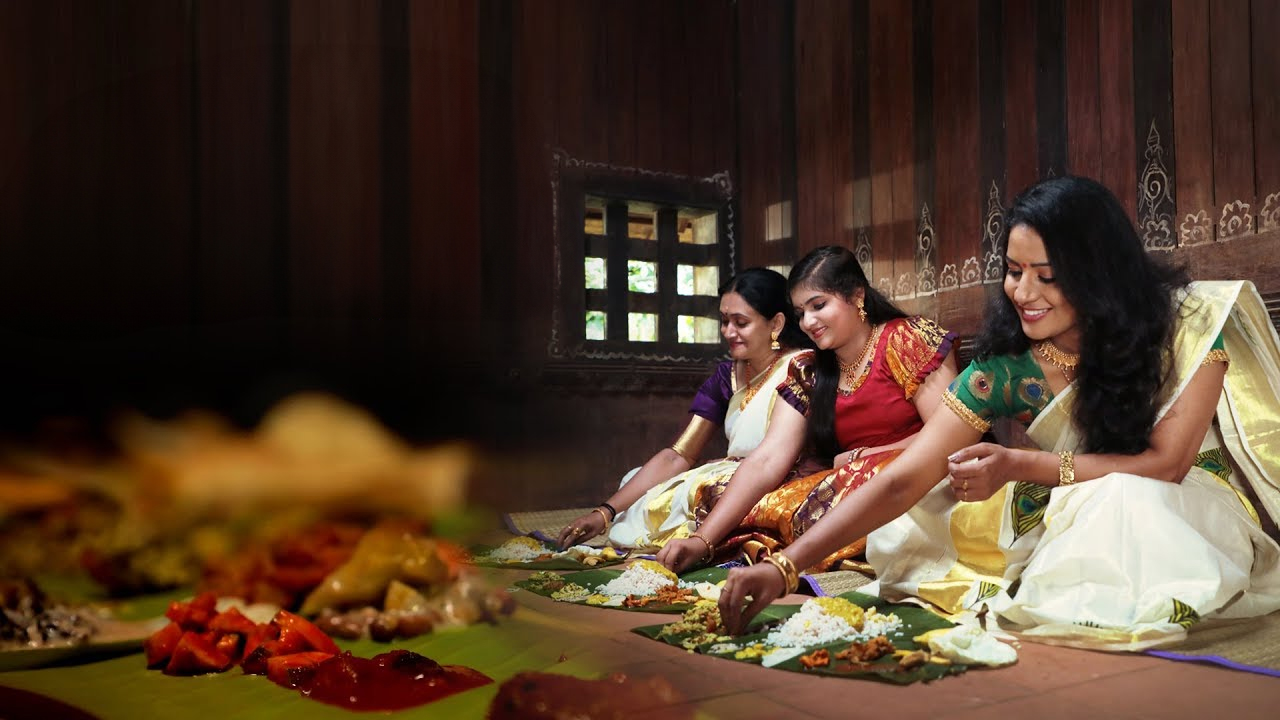Preparing and Serving Kerala Sadya

Kerala, a southern state in India, is known for its rich cultural heritage and mouthwatering cuisine. Among the various culinary delights that Kerala has to offer, “Sadya” holds a special place. Sadya, meaning “feast” in the Malayalam language, is a traditional vegetarian meal served on a banana leaf. It is a culinary extravaganza that showcases the diverse flavors and culinary expertise of Kerala. In this article, we will delve into the fascinating world of Kerala Sadya and explore its significance, components, and the joyous experience it brings to those who savor it.
The Significance of Kerala Sadya
Kerala Sadya is more than just a meal; it is a celebration of culture, community, and togetherness. It is commonly served during festivals, weddings, and special occasions, bringing people together to share a delightful culinary experience. The meal is served in a specific order, with each dish carefully placed on the banana leaf, creating a visual feast for the eyes as well.
Banana Leaf: The foundation of Kerala Sadya is the banana leaf, which serves as a plate. The leaf is eco-friendly, imparting a unique aroma to the food and adding a touch of tradition to the dining experience.
Rice: Boiled rice, known as “parboiled rice” or “matta rice,” is the centerpiece of Kerala Sadya. It is served on the lower half of the banana leaf and acts as a base for the various accompaniments.
Sambar: A flavorful lentil soup made with a variety of vegetables and spices, sambar is a must-have in the Sadya. It is poured over the rice, enhancing its taste and providing a tangy kick to the meal.
Avial: Avial is a unique dish that combines a medley of vegetables cooked in a coconut-based gravy. It is a harmonious blend of flavors and textures, adding a refreshing touch to the Sadya.
Thoran: Thoran refers to a dry vegetable stir-fry made with grated coconut. Various vegetables like cabbage, beans, carrots, and raw bananas are commonly used. Thoran adds a crunchy element to the meal and is packed with nutrients.
Olan: Olan is a mild curry made with ash gourd, black-eyed peas, coconut milk, and green chilies. It imparts a creamy and subtly spiced flavor to the Sadya, balancing the other intense flavors.
Pachadi: Pachadi is a yogurt-based side dish prepared with vegetables like cucumber, beetroot, or pumpkin. It offers a cooling effect and acts as a palate cleanser amidst the array of flavors.
Rasam: Rasam is a tangy and spicy soup made with tamarind extract, tomatoes, and spices. It aids digestion and adds a zesty flavor to the Sadya.
Pickles: Kerala Sadya is incomplete without an assortment of pickles. Mango pickle, lime pickle, and ginger pickle are commonly served, providing a burst of tanginess to the meal.
Payasam: The grand finale of Kerala Sadya is the sweet dish called Payasam. It is a luscious dessert made with jaggery, rice, vermicelli, or lentils, cooked in milk and flavored with cardamom and nuts. Payasam is served in small bowls or banana leaf cups, leaving a lasting sweet memory.
Serving the Sadya:

- Once the banana leaf is arranged with all the dishes, it is ready to be served.
- Traditionally, the Sadya is served on the floor or on a low wooden platform called “mattu.”
- Guests sit cross-legged around the mattu, and the Sadya is served to them.
- The host or servers move around, serving each guest with additional helpings of the dishes they prefer.
- The meal begins with savoring the flavors of the sambar and avial, followed by other dishes.
- The grand finale is the serving of payasam, which is enjoyed as a sweet conclusion to the feast.
Kerala Sadya is not just a culinary delight; it is an embodiment of Kerala’s rich heritage, flavors, and traditions. It represents the warmth and hospitality of the people of Kerala, who take immense pride in serving this grand feast. The intricate arrangement of dishes, the explosion of flavors, and the communal dining experience make Kerala Sadya a gastronomic journey that leaves an indelible mark on anyone fortunate enough to partake in it. So, if you ever find yourself in Kerala, be sure to savor the flavors of Sadya and immerse yourself in this culinary masterpiece.


You Might Also Like
The Science of Perfect Biryani: Secrets of Layering, Rice, and Spices.
Discover the secrets to perfect biryani—fluffy rice, balanced spices, and layered flavors...
The Significance of Spices in Kerala
Spices are the cornerstone of Kerala cuisine, playing a pivotal role in...
Kerala Mussels (Kallumakaaya)— Varieties, Benefits, Risks, and How to Cook Them.
Effective Weight Loss Diet: A Balanced Approach to Shedding Pounds.
A successful weight loss diet is all about balance — creating a...
Celebrating Onam 2025 – A Festival of Unity, Harvest & Flavours 🌸🌾
Celebrate the joy of Onam 2025 with us! From vibrant pookalams to...
Celebrating International Chefs Day (October 20): Honouring Culinary Artistry & Inspirational Spirit